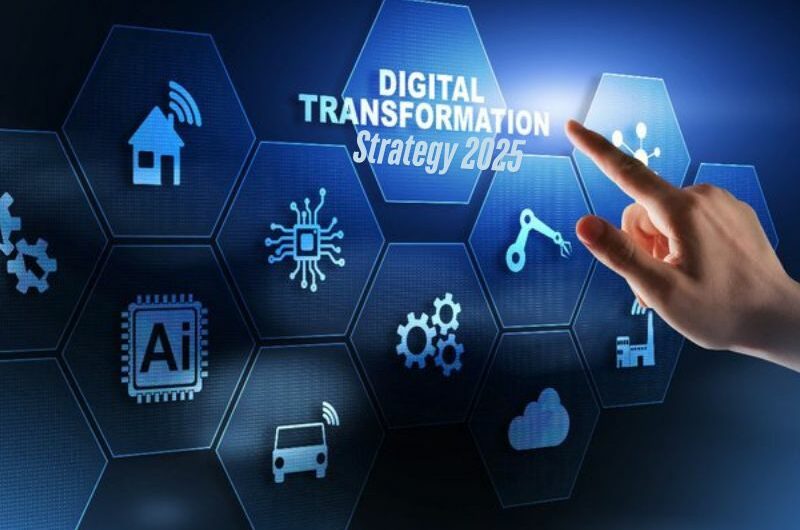The ubiquitous rise of the internet has had a profound effect on mankind, dramatically altering both how we live and work. Yet, in our on-demand society replete with endless conveniences, one of the single most resonating benefits has been the ability to digitally earn an income from virtually anywhere on this planet. It’s an allure that attracts droves of individuals who are frustrated with the throes of 9-to-5 life, seeking ways they can untether the cord of corporate responsibility.
Clearly, the temptation of becoming a digital nomad and traveling the world, or simply working from home on your own schedule, was born well before Tim Ferris’s iconic, 4-Hour Work Week. However, for most who are drawn into this life replete with the potential for unapologetic income and wealth, coupled with the ability to call their own shots and build a business around an intended lifestyle, affiliate marketing offers a cliched pathway to riches beyond measure.
For Dan Henry, the salient dream of living life and succeeding by marketing products or services as an affiliate wasn’t just alive, it was lucid. Still, dream as he might, in 2011 Henry was still just a college dropout delivering pizzas door-to-door just to make a living. However, compelled by a nascent desire to live according to own terms, he knew that there was more to life than existing paycheck-to-paycheck.
Yet, like any other young adult, Henry struggled in life, unsure of where to go or what to do, embattled by bad habits that included a chronic addiction to cigarettes. He was the product of circumstances, but that didn’t make him a victim. Like any other person looking to succeed, he knew some serious changes to his life were in order. And one of those changes was the necessity to quit smoking cigarettes, a habit he had come to abhor.
Although he had tried countless times in the past, he had failed to quit. But this time was different. His frame-of-mind had changed. And something inside of him clicked when he realized he could use electronic cigarettes to actually ween himself off the “real thing.” He implemented a system where he used a low-quality gas station brand, and went from strong to medium then mild over a multi-week period.
When he realized that it had worked and he had largely disposed of the habit he wanted to be rid of for so long, he decided to share his story with others. So he started a blog. This was well before Henry had discovered the big wide world of affiliate marketing. In fact, he knew little about selling anything as an affiliate at the time.
However, his story was powerful. And the way that he related his experiences on his blog resonated with others. He was honest and transparent about the pain smoking had caused him, and relayed his journey to quit. Very quickly, his blog traffic grew. People were swarming to the site and Henry knew he was onto something.
Over time, he started reviewing other brands of electronic cigarettes just to report it back to his audience. He methodically went through every brand on the market and eventually realized that the V2 Cigs were one of the best he could find. In fact, it was that exact brand that helped him entirely cut out the habit of smoking actual cigarettes.
His blog became wildly successful. At roughly the same time, V2 Cigs informed him of their affiliate program where they paid out 50% commissions. That was Henry’s “aha” moment. Almost immediately after adding those affiliate links onto his blog, his income exploded. He was making over $30,000 per month and it was passive income. He was on top of the world.
Then, came the dreaded Google algorithm updates. After ranking number one for “electronic cigarettes” and “electronic cigarette reviews,” which were steadily driving massive amounts of traffic to his blog, his rankings fell off of a cliff. He tells me had made a huge mistake by solely relying on Google for traffic and not leveraging it to build an audience elsewhere.
After the updates, he was nowhere to be found. He wasn’t even on the first 10 pages. In fact, his rankings fell down to the 126th listing for “electronic cigarettes.” Henry was devastated. He did everything he could to remove low-quality links and disavow them, but to no avail. He had been slapped with a massive Google penalty. His heart sank.
Depression set in for Henry. But he didn’t wallow for too long. He knew he needed to move on. Thankfully, he had saved up a bunch of money and had purchased his house in cash. He didn’t need to pay rent, but he also knew he couldn’t sit around and twiddle his thumbs. So he decided to buy a run-down nightclub and fix it up.
Once the nightclub had been finished, he needed a way to get the word out. He needed to get people in the door because the venue had been shutdown for so long that no one even knew it still existed. Considering his past experience with online marketing, he knew that the solution was a digital one rather than a paper one.
This was early 2013 and Facebook had kicked into high-gear. So Henry tried his hand at Facebook ads. And it was a hit. He was able to reach the right people and pack the nightclub. Shortly after, he sold it for a big profit. But it was then that he realized how he could combine the power of advertising and affiliate marketing to really take things to the next level.
Today, Henry is one of the foremost affiliate marketers, winning contests and awards (he even recently won a Lamborghini in a ClickFunnels affiliate marketing contest) at nearly every turn. And he’s built up a devoted tribe that is so emotionally attached to him and his message that it’s reached a mass-hysteria level that I would only liken to a internet celebrity, earning him upwards of three-hundred-thousand dollars per month on autopilot.
What Is Affiliate Marketing?
When you sell anything for anyone else and you receive a commission for it, you’re marketing as an affiliate. You’re not just a salesperson working for that company. You’re independent and on your own. There are no thresholds that need to be met. But the more you sell, the more you earn.
The beauty of affiliate marketing is that there are no limitations and you can effectively earn money by marketing for many companies at one time. This offers a low-friction-to-market opportunity because you don’t need to create your own products or services to earn money selling anything in this format.
However, don’t get me wrong. Affiliate marketing isn’t easy. Unless you have a significant audience or a platform, selling anything will require a significant investment of both your time and your money. The truth is that without traffic, you’ll struggle. This is likely the problem that many would-be affiliates face today.
I relay the story of Dan Henry because it exemplifies the power of this thing called the internet that binds us all. And while Henry has succeeded on a massive scale, so many others have hit roadblocks, stumbled, fallen and failed. The large rate of failure helps to mystify and obfuscate this world of affiliate marketing because so many are trying to penetrate this market but so few are able to succeed on a large scale.
That might be why many people liken marketing anything as an affiliate to more like waging a war than living on easy street. The truth is that it isn’t easy by any measure. It takes time. And you can’t buy into all the hype. However, by keeping a few principles and steps in mind, you too can dominate in the world of affiliate marketing and earn money while you sleep. The trick? Stay persistent and don’t give up.
How To Succeed With Affiliate Marketing
When it comes down to brass tacks, there are some important steps to be taken to succeed as an affiliate marketer, and an overall framework that needs to be followed. But before getting into that, it’s important to get a lay of the land and look at the macro aspects of marketing and buyer mentality before being able to leverage any of that psychology to sell commissionable products or services.
One of the most important things that I learned by talking to Henry is that there are two types of buyers in this world:
- Logical buyers: These buyers base all their decision on cold-hard facts and suffer from something called analysis paralysis. They over-analyze and over-judge every single thing. They base their purchasing decisions on data because they don’t believe in you, so they don’t give their heart and their souls to you.
- Emotional buyers: When someone buys a product or service based on their emotions, they believe in it. When people become emotionally invested in you, it enables you able to build a massive tribe. These are the best types of buyers because your story resonates with them and they become firm believers in you no matter what you have to sell.
This is important in the framework of not just affiliate marketing, but in marketing anything online, especially when the products are your own products and you’re not just receiving a commission for selling them. Clearly, you need to build emotion around the entire process. In other words, you need to create an emotional attachment to every stage of the sales funnel.
The word sales funnel is just a technical word to describe the buying process. You can think about it as any ordinary funnel. At the top, you would pour in a lot of liquid or oil or whatever else you’re deciding to funnel down. As you pour, it filters a large amount of whatever it is that you’re pouring in, into a defined space.
Just like a real-world funnel, a sales funnel acts similarly. It funnels down visitors through several stages before they become buyers. The way Henry explains it, if you’re not creating an emotional attachment during each stage of that funnel, then you’re largely wasting your time. It has to start from the very beginning, and it has to carry out all the way to beyond the purchase.
This is how you turn visitors into buyers into raving fans. If anyone is serious about “making it” in affiliate marketing, or simply making any semblance of money online, they have to adhere to this single principle. The better you get at creating an emotional attachment during each stage of your funnel, the more likely you’ll be to succeed and even to get rich through your efforts.
Understanding The Journey And The Bigger Picture
While sales funnels help to illuminate the systems necessitated for implementation and eventual success as an affiliate, they don’t illuminate the bigger picture. To understand the journey of an affiliate, you need to understand the four major components involved in affiliate marketing:
Publisher: The publisher, which is you, requires the development of a platform that can be used to market products, services or information that you intend to peddle as an affiliate. One of the most difficult aspects of this industry is actually building a platform with massive reach.
Merchant: Once your publishing platform is in place, wherever that might be located, the merchant has to be selected. The products, services or information that you’ll market as an affiliate will come from a specific merchant. You should select a merchant with an offering relevant to your audience.
Network: Each merchant that’s worthwhile in pursuing often is part of a larger network of companies that extend their offers on an affiliate marketing platform. There are loads of networks out there. Sometimes, specific companies create their own affiliate programs rather than joining a larger network.
Consumer: Once everything is in place, you need to build content targeted towards the consumer and it needs to deliver value. If you attempt to sell at every turn or create thin content that’s merely veiled in an effort to promote a specific offer, you won’t gain the traction that you’re looking for to succeed in this industry.
The following 8 steps provide a more in-depth approach to becoming a successful affiliate marketer.
[Publisher] — Create Platform & Build Audience
Step 1 — Develop Your Story
Be transparent and create your story. What did you suffer through? Are you a reluctant leader or are you the hero leading the charge? Ensure you properly relay your story so that you can bridge the emotional bond between people who have no idea about who you are. Why should they listen to you? What “secrets” have you uncovered over the years? What failures did you suffer through or lessons did you learn along your journey?
Make people care about you. You have to get them emotionally invested in you before you can sell them anything. In fact, Henry says that you should never try to sell something right away, at least not until people become fully vested in you and your personal journey. Russell Brunson calls this your Attractive Character. This is what’s allowed both Henry and Brunson to achieve wildly-outlandish incomes from their affiliate marketing efforts.
Step 2 — Create Your Diversified Platform
The second step in your journey is to create a diversified platform. Why diversified? Well, when Henry was flying high with his Google search results, then suddenly knocked down to beyond page 10 after an algorithm update, he tells me that he wishes he had diversified. Instead of focusing solely on the blog, he tells me he should have been building a Facebook Group, online forum and other ways that he could stay connected with people.
Instead, he focused solely on one platform. When that platform fizzled out, he lost his foundation and his footing as an affiliate marketer. He was unable to reach the people who had once been visiting his website because he was now nowhere to be found. Had he diversified, he wouldn’t have gone through the massive pain related to that ranking change.
Step 3 — Develop And Nurture Your Audience
Once you’ve built your platforms, you need to develop and nurture your audience. Reach out and connect with them on social media channels. Respond to their emails. Engage with them in comments. Don’t make it difficult for them to reach you. You need to connect with your audience and develop that relationship over time. Henry tells me that if you succeed at creating this emotional bond or connection, people will follow you, trust you, and more often than not, buy whatever it is that you offer them.
For example, when someone drops a comment on a blog post, you should engage with that person, even if it’s only to say thanks. This helps to bridge that emotional divide. Be sure to stay on top of all engagement on every platform. Don’t allow it to consume you, but do your best to respond to people in a timely manner. This could make all the difference in succeeding with a sale or making someone pass you up. The more you nurture and develop your audience, the more they’ll believe become fervent buyers.
[Merchant] — Find Product Or Company To Promote
Step 4 — Search For A Relevant Product Or Company
Once your platform is live, you need a product to promote. However, you should avoid the temptation to do this early on. Get that emotional investment going before you attempt to do this. If you begin too early, you run the risk of losing a large portion of your audience. Take the time to first create insatiable content and deliver enormous amounts of value before you attempt to sell your audience anything.
However, when you are ready, search for the right product or company that’s relevant to your audience. When Henry quit smoking, his story was part and parcel to the bigger picture of selling electronic cigarettes as an affiliate. Although his blog’s success was short-lived at the time, at it’s apex, it was generating over $30,000 because he nurtured his audience and built that emotional bond before ever trying to sell them anything as an affiliate.
Step 5 — Survey Your List
If you’ve taken the time to build an email list, then you should use that opportunity to survey your subscribers. Consider asking them, specifically, what they’re most interested. I recently did this and the answers actually surprised me. However, another thing the answers did was allow me to laser-focus my affiliate offers in the right direction. This is invaluable information and it’s coming straight from your list.
To do this, you need to offer something in return. Use email providers like InfusionSoft, MailChimp, ConvertKit, Aweber, or any number of others, to shoot out the email to a survey. You can use Survey Monkey to build your survey, but you have to give them something in return. Will you give them a free cheatsheet? Maybe a downloadable how-to ebook? Determine the best thing to offer and be sure to get clear on what they need to do and what you’ll give them in exchange.
[Network] — Apply To Related Networks
Step 6 — Search For Related Networks
The fact is that most of the bigger companies that offer products and services for affiliates to promote use larger affiliate networks to position their offers. Some of the bigger affiliate networks include ClickBank, CommissionJunction, Rakuten’s LinkShare, Impact Radius and countless others. Sometimes, like with the case of Fiverr for example, they run their own affiliate networks so you would apply directly to the company.
However, be aware that you need to submit an application to most of these networks to be accepted. Once you’re accepted in, you’re often required to apply directly to the merchant afterwards. So there are two layers or gates that you need to bypass. That’s also why it’s important to build up your platform and create that emotional bridge between yourself and your audience before attempting to promote anything to them.
[Consumer] — Build Content To Promote
Step 7 — Deliver Massive Value
There are countless mediums that you can deliver valuable content to your audience. You can use your blog. If you don’t have a blog (which is a big mistake by the way), you can use social media, content marketing, video tutorials, infographics and so on and so forth. But your primary channel to deliver long-form value is going to be your blog. Start building a blog early and stay consistent with it.
Not only do you have to build content that delivers massive value, but it also has to be engaging. People need to stick around and read your content, interacting with it and sharing it. That’s when you know you have something great. And that’s what it takes to make search engines like Google to really stand up and notice you.
Step 8 — Promote Your Affiliate Links
Every single network or merchant will provide you with specific links that you can use to promote whatever it is you’re looking to sell. Be sure to scrutinize the details of any offer that you decide to partake in. Then, build out your affiliate links and ensure that the sales and clicks are registering your to your account. You can use URL shorteners like Bitly or Google’s own shortener to make the links more manageable in terms of length.
Topics #Author Dan Henry #Dan Henry Digital Millionaire #Dan Henry Get clients










